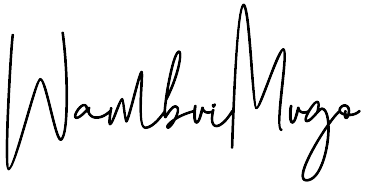The Freelancer’s Guide to Maximizing Income with Upselling and Cross-Selling

What if I told you that you could grow your freelance income by up to 30%—just by tweaking how you work with your existing clients? That’s the magic of upselling and cross-selling.
This guide is packed with everything you need to get started to upsell and cross-sell with confidence. Ready to work smarter, not harder? Let’s get started.
Understanding Upselling and Cross-Selling

What is Upselling?
Upselling is all about taking the service your client has already purchased and enhancing it with premium options or upgrades.
Think of it as offering a better version of what they’re already getting. It’s like saying, “What if we took this to the next level?”
What is Cross-Selling?
Cross-selling is about offering additional services that complement the work you’re already doing. It’s a way to add value by addressing related needs your client might not have considered yet.
Cross-selling works because it frames you as a proactive problem-solver who truly understands your client’s bigger picture.
Key Differences and How to Apply Them
While both upselling and cross-selling aim to increase the value of a client relationship, the difference lies in their focus:
- Upselling: Enhancing the current service to make it even better.
A designer offering a high-end logo animation as part of a branding package.
- Cross-selling: Suggesting complementary services to expand the scope.
A web developer bundling ongoing site maintenance with the initial design project.
Benefits of Upselling and Cross-Selling
Boosts Your Income
The math is simple: getting an existing client to invest more is much easier than onboarding someone new. Acquiring new clients can take time, energy, and money. You can significantly increase your income without doubling your workload.
Turns Clients Into Loyal Partners
When you go the extra mile to offer services that align with your client’s needs, you’re showing them that you truly understand their goals. This level of attention and care builds trust and loyalty, making clients far more likely to return to you for future projects—and even recommend you to others.
Positions You as an Expert
Freelancers who upsell and cross-sell effectively aren’t just completing tasks—they’re delivering solutions.
- A content writer who offers SEO optimization alongside blog writing shows they understand how to make content perform.
- A designer who recommends additional brand assets like business cards or social media templates proves they understand cohesive branding.
Saves Time and Energy
Freelancing can often feel like a constant cycle of marketing yourself, onboarding new clients, and starting fresh. Upselling and cross-selling allow you to break that cycle by focusing on deepening relationships with the clients you already have.
Make You Stand Out in a Crowded Market
The freelance world is competitive, and clients are always looking for professionals who offer more than the basics. By upselling and cross-selling strategically, you can position yourself as a comprehensive, one-stop solution. This not only makes your services more attractive but also ensures you stay ahead of competitors who are simply offering standard packages.
How to Find Opportunities for Upselling and Cross-Selling
Know Your Client Inside and Out
The best opportunities often come from a deep understanding of your client’s business and goals. For example:
If a client mentions struggling to maintain a consistent brand voice, a copywriter could suggest creating a comprehensive style guide.
The more you understand your client’s world, the easier it becomes to recommend services they truly need.
Use Insights From Past Projects
Your portfolio isn’t just a showcase of your skills—it’s a treasure of insights into what clients need. You can spot patterns or gaps that reveal opportunities for upselling or cross-selling.
For example:
- If previous clients often come back asking for SEO services after a website launch, consider offering it upfront to current clients.
- If you’ve noticed clients requesting post-project support like social media scheduling or maintenance, make that part of your initial pitch.
Listen for Pain Points and Future Goals
During conversations, pay attention to comments about frustrations or long-term plans. These are golden opportunities to step in with solutions.
For example:
- If a client expresses frustration about how long it takes to manage their blog, a freelance writer could offer content planning or scheduling services.
- If a graphic designer hears a client talking about upcoming events, suggesting event-specific collateral like banners or posters could be an easy cross-sell.
Watch for Industry Trends
If you can spot emerging needs, you’ll be able to suggest services that position your clients for success—and make you look like a forward-thinking expert.
For example:
A social media manager could offer short-form video content packages as platforms like TikTok and Instagram Reels grow in popularity.
When you’re the first to bring a fresh idea to the table, clients will see you as a proactive partner, not just a service provider.
Ask the Right Questions
Sometimes, all it takes to uncover an opportunity is to ask.
Try asking:
- “Do you have a plan for maintaining this after the project wraps up?”
- “Would you be interested in a more detailed version of this that could support other areas of your business?”
- “Are there any other challenges you’re facing that I might be able to help with?”
Offer Tiered Services That Highlight Value
One of the easiest ways to upsell is by offering tiered service packages, where each level provides more value. This lets clients choose the option that best fits their needs, while also giving them a clear incentive to upgrade.
For example:
- A graphic designer could offer:
Basic: Logo design.
Standard: Logo design + brand guidelines.
Premium: Logo, brand guidelines, and a suite of social media assets.
- A writer might structure packages like this:
Basic: One blog post.
Standard: Blog post + SEO optimization.
Premium: Blog post, SEO, and promotion strategy.
Show, Don’t Tell: Use Data and Examples
Clients are more likely to invest in an upsell when they can see the tangible benefits. Use case studies, testimonials, or data to illustrate how your upsell can deliver results.
For instance:
- If you’re a social media manager, show how your premium analytics service helped a client increase engagement by 40%.
- As a web developer, you could share examples of how improved hosting speed reduced bounce rates on a client’s website.
The key is to connect the upsell to measurable outcomes that resonate with your client’s goals.
Deliver Value First
The best time to upsell is after you’ve already proven your value. When clients are happy with your work, they’re more likely to trust your recommendations.
For example:
- After completing a logo design, a graphic designer might suggest creating matching business cards or brand guidelines to ensure a cohesive look.
- Once a writer has delivered a compelling blog post, they could offer a content calendar to keep the momentum going.
Make It Personal
Generic upsells can feel forced. Instead, tailor your upsell to each client’s unique needs. Show them how the upgrade will solve their specific challenges or help them achieve their goals faster.
For example:
- If a consultant knows their client struggles with team adoption of new processes, they could offer customized training sessions as an upsell.
- A photographer might propose a premium editing package for a client who values high-end visuals for their brand.
The more personal your upsell, the more likely your client is to say yes.
Position It as a Solution, Not a Sale
Your upsell should always feel like a value-add. Focus on how it benefits the client. Use language that emphasizes results:
- Instead of saying, “I can add this for an extra fee,” try, “This upgrade will make your project even more impactful by (specific benefit).”
- Instead of pitching an add-on, frame it as a way to future-proof their investment or save them time and money in the long run.
When clients see your upsell as a solution, they’re much more likely to embrace it.
Bundle Complementary Services
The easiest way to cross-sell is by bundling related services into packages that provide added convenience and value for your client.
For example:
- A graphic designer could combine logo design with social media graphics or a business card template.
- A web developer might bundle website creation with ongoing maintenance or hosting services.
- A freelance writer could pair blog writing with a content calendar or newsletter copy.
The key is to make the package feel like a cohesive solution that saves time and effort, rather than just a collection of extra services.
Solve Problems Your Clients Don’t Know They Have
Many clients don’t realize they have additional needs until you point them out. Cross-selling is your opportunity to be a proactive problem-solver.
For example:
- If you’re a consultant, you might notice inefficiencies in your client’s workflow and recommend a training program to address them.
- If you’re a photographer, you could suggest adding headshots or branded lifestyle photos to a product shoot for a more versatile library of images.
Make Your Offers Clear and Timely
Timing matters when cross-selling. Introduce complementary services at the right stage of your project, so they feel like a natural fit rather than an afterthought.
For example:
- A web developer might propose a website audit service at the start of a redesign project to ensure everything is optimized.
- A social media manager could suggest repurposing successful posts into email campaigns after showing strong results from initial content.
Pairing a timely offer with a clear explanation of its benefits ensures your cross-sell feels relevant and valuable.
Use Visuals to Show Benefits
A picture is worth a thousand words, especially when cross-selling. Show your clients how the additional services you’re offering will elevate their project.
For example:
- A designer could show mockups of how social media graphics will complement the client’s new logo.
- A writer might present a sample email funnel that ties perfectly into a client’s blog content.
Visual aids make it easier for clients to understand the value of your offer and envision the impact on their business.
Here’s how to handle common concerns and turn skepticism into confidence.
Understand the Root of Their Hesitation
Before addressing an objection, take a step back and listen. Ask clarifying questions to understand what’s holding your client back. Common objections often fall into these categories:
- Budget: “I don’t have the money for this right now.”
- Timing: “I don’t think this is the right time to invest in extras.”
- Value: “I’m not sure I need this or how it will help me.”
Emphasize ROI (Return on Investment)
Many objections stem from clients not fully understanding how the additional service will benefit them. Show them the value by framing your upsell or cross-sell as an investment with tangible returns.
For example:
- Budget Concern: If a client is hesitant to spend on SEO services, explain how optimized content can drive more traffic to their site, ultimately leading to more sales.
- Timing Concern: For a client worried about launching a project, emphasize how addressing issues now can save them time and money down the line.
Back up your points with data, testimonials, or case studies to reinforce your credibility.
Provide Scalable Options
Clients may feel overwhelmed by the cost or scope of your offer. Make it easier for them to say “yes” by providing scalable options or phased approaches.
For example:
- A web developer could start with basic functionality upgrades and offer more complex features later.
- A designer could break a full rebranding project into smaller deliverables, such as a logo redesign first, followed by a comprehensive brand identity package.
This approach shows clients that you’re flexible and willing to work within their constraints.
Offer a Trial or Low-Risk Option
Sometimes, clients just need a little reassurance before committing. A trial or limited-scope offer can help ease their concerns while giving them a taste of the value you provide.
For example:
- A social media manager could offer a one-month analytics package to demonstrate the benefits of ongoing monitoring.
- A consultant might suggest a single strategy session before pitching a long-term partnership.
These low-risk options build trust and often lead to bigger commitments down the road.
Reframe the Conversation
When clients push back, it’s tempting to defend your offer. Instead, reframe the conversation by focusing on their goals and how your service aligns with them.
For instance:
- Instead of saying, “This upgrade costs more but adds value,” try, “This service is designed to help you [achieve their specific goal].”
- Highlight how your recommendation directly addresses their concerns or challenges, making it about them—not you.
This shifts the focus from the cost to the benefits, making your offer feel like a natural solution.
Build Trust Through Transparency
Trust is the foundation of any successful upselling or cross-selling effort. Be honest about what your services can—and can’t—do. If an upsell isn’t the right fit for their needs, say so. Clients will appreciate your honesty, and it will make them more likely to trust your recommendations in the future.

Takeaway
Here’s the beauty of these strategies: they allow you to work smarter, not harder. The freelance world is competitive, but when you master the art of upselling and cross-selling, you create a business that’s not just profitable—but also sustainable and deeply rewarding.
Start small, stay consistent, and watch as these strategies transform not just your income, but your client relationships as well.
Take the first step today—join our freelance mastery hub and see how far it can take your freelance career.











